With the number of apps available today, people must take steps to control their in-app purchasing, not just for financial reasons but also to avoid wasting time on paid tools. Similarly, If you want to avoid your kids ordering loot boxes or cosmetic items in apps, it is imperative to turn off in app purchases is important. In this article, we will guide you on how to Enable or Disable In-App Purchases on different phones and tabs so that you have full control over your finances. The following details further Include a breakdown of what in-app purchases are (and how dangerous they can be) and guidelines for iOS as well as Android devices. Finally, we will also discuss how FlashGet Kids and other parental control systems can assist in monitoring & limiting children’s purchases.
What are in app purchases?
In app purchases (IAP) are paid options offered within mobile applications and games that can be used to buy additional content, features, or services. Developers use this approach to monetize their app beyond the price of downloading it in an attempt to recoup income long after users start trotting about with the application. But what are in-app purchases and how do they work differently based on app types?
Users can do transactions directly from an app ( IAPs – In-app purchases). These could be virtual goods purchases (in a game), enable premium features purchase via in-app, or subscriptions revolving around services. In simpler terms, it mean a way to enrich the user experience further by providing them with more content or features not available generally in the free apps or basic versions of the apps.
Types of in-app purchases
Here are a few types of in-app purchases that solve different purposes and support needs:
- One-Time Purchases: A unique purchase of a feature or content that will provide access – permanently. This could include a one-time fee to disable ads in an app or gain access to some unique level.
- Consumable Purchases: These purchases are depleted and can be purchased repeatedly. This could be a virtual currency, some extra lives in a game, or even power-ups. They must be repurchased in case they want more used.
- Non-Consumable Purchases: Non-Consumables purchases do not have any expiry. They unlock lifetime access to premium tools, say a photo editing app.
- Subscriptions: Recurring payments billed every month or year that allow the user to have access to current and future content, and services. These can be music streaming services, fitness applications with constant new content, and newspaper apps.



What are the negative effects of in-app purchases for kids?
In app purchases can be pretty harmful to children as it keep them addicted to the app spend money on. So, it is best to turn off in app purchases if your kid is interested in buying digital stuff in games. These purchases can be further described by their basket of negative effects, which include:
Monitor and manage with precision and ease
- Accidental spending: Children may not understand they are spending real money on virtual items, and their parents might see a bank notification sometime later that children spent their money on ”keys or loot crates” they had never heard of before. This is because the children simply click around the colorful images, not realizing they are buying anything.
- Financial stress: Several more clicks can accumulate into several dozen dollars spent, and their parents might realize they were scammed by this time. This leads to financial stress and unexpected notifications from the bank about the oncoming receipt.
- Addictive behavior: The purchases are frequently tied to the goal: ”If you want to win, you’ve got to spend!”. This creates addictive behavior where children spend money trying to reach a certain point in the game to make their dragons or avatars stronger than their buddies.
- Misleading Advertising: These practices are misleading and can prevent a player from affordable in-app purchases which do not help their gaming experience. They trick children into spending more money than they were expecting as it makes purchases appear to be straight out of a virtual world.
How to turn on or off in app purchases on iOS devices (iPhone/iPad)?
If you have an iOS device, turning off in-app purchases is a straightforward process. Here’s how you can do it:
- Open Settings: Start by opening the Settings app on your iPhone or iPad.
- Tap on Screen Time: Scroll down and tap on “Screen Time.
- Tap on Content & Privacy Restrictions: Enable this option if it’s not already turned on.



- Enter Your Screen Time Passcode: If prompted, enter your Screen Time passcode.
- Tap on iTunes & App Store Purchases: This option allows you to manage purchases made through the iTunes and App Store.
- Select In-App Purchases: You will see the option for “In-App Purchases.”
- Set to Don’t Allow: Change this setting to “Don’t Allow” to turn off it.



Following these steps will ensure that in app purchases are not allowed on your iOS device, preventing accidental or unwanted transactions.
How to turn on or off in app purchases on Android devices?
For Android users, the process to turn off in app purchases varies slightly. Here’s a step-by-step guide:
- Open Google Play Store: Launch the Google Play Store app on your Android device.
- Tap on the Menu Icon: This is usually represented by three horizontal lines or a hamburger icon, located at the top-left corner.
- Select Settings: From the menu, tap on “Settings.”
- Tap on Authentication: Under the User controls section, tap on “Require authentication for purchases.”



- Select an Option: Choose the option that best suits your needs. For example, you can select “For all purchases through Google Play on this device.”



- Enter Your Google Account Password: This step is to confirm your identity and enable the setting.
By following these steps, you can easily turn off it on your Android device.
How can parental control apps help monitor and restrict spending?
Parental control apps, are a powerful tool to help you keep your kids safe in the digital world. You can use apps like FlashGet Kids to monitor and provide alerts. It is fairly simple to set up this application, and you’ll get remote access to your child’s phone after the setup has finished. Here is what you can expect.
- Monitoring: These are apps that keep a close watch on each and every payment made, along with providing detailed reports of your spending.
- Real-time Alerts: When a purchase is done, you can get decree alerts and take necessary actions immediately.
- Content Restrictions: Prevent kids from accessing apps or making purchases that you don’t want them to.
With a parent control app such as FlashGet Kids, you are able to assume all in-app purchases so only money paid for content gets spent. Go through the following guide to set up alerts on your child’s device.
1. Download and install FlashGet Kids on your phone.
2. Create the parent account after launching this application.
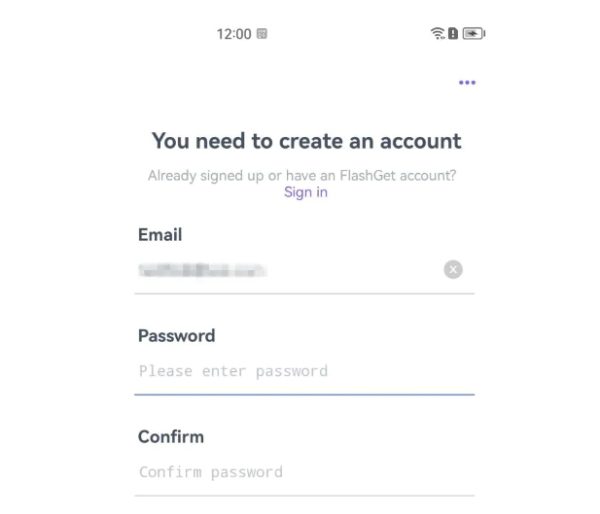


3. Download the kid’s version of FlashGet Kids from your child’s mobile browser.
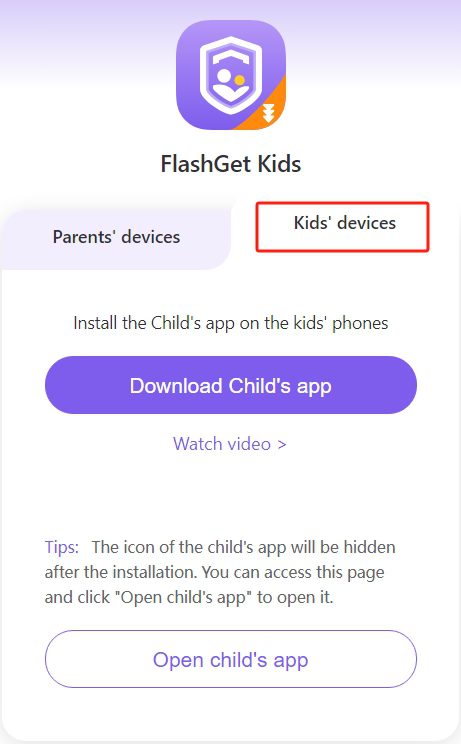


4. Launch both apps and pair them together by following the in-app instructions.
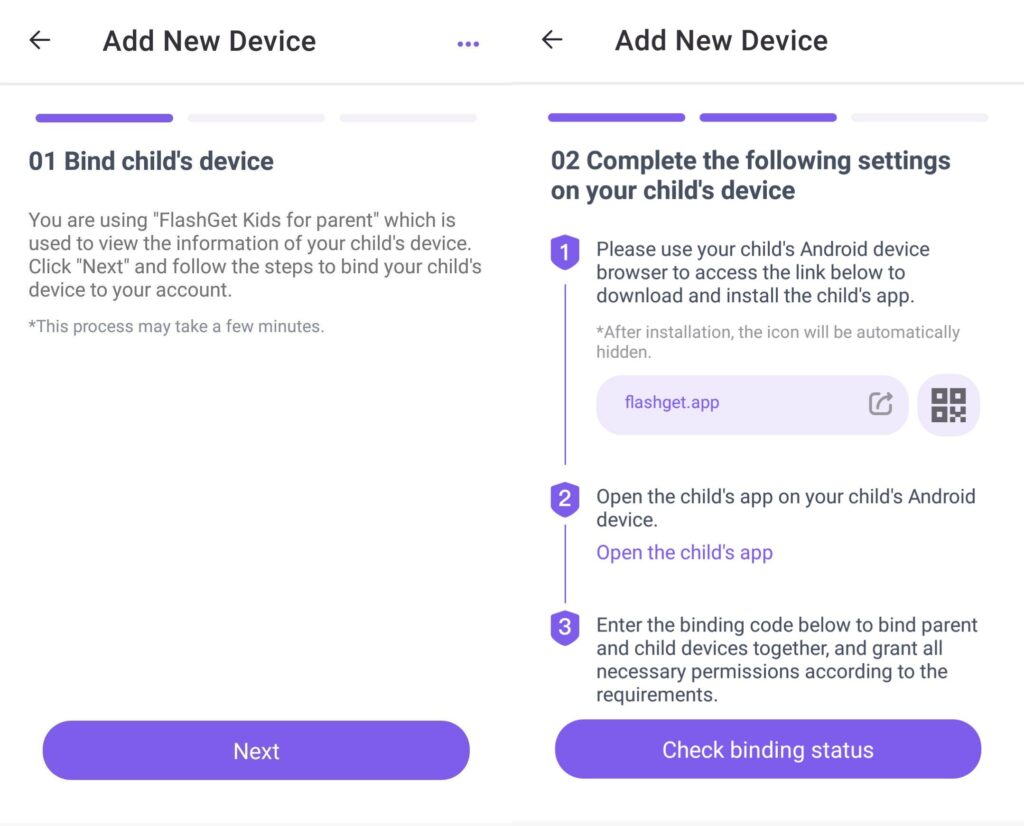


5. Open the FlashGet Kids app on your phone and head over to the parental control dashboard.
6. Navigate to the notice section on the bottom left to view all of your kid’s purchases.
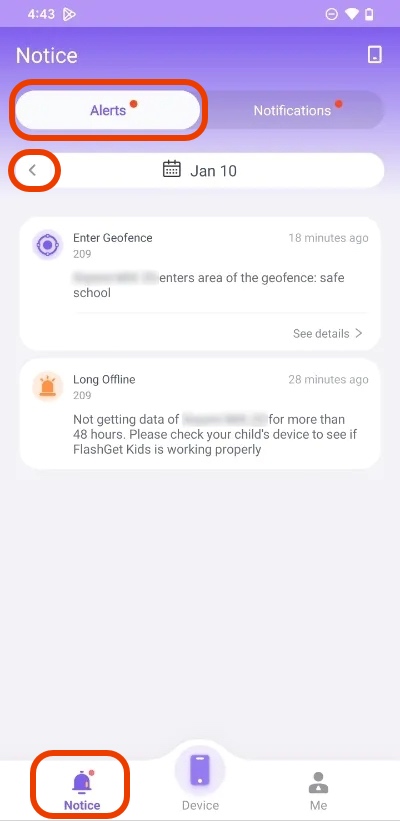


7. Go to Device Activity > Usage limits > Disable All Apps & Forbid New Apps.
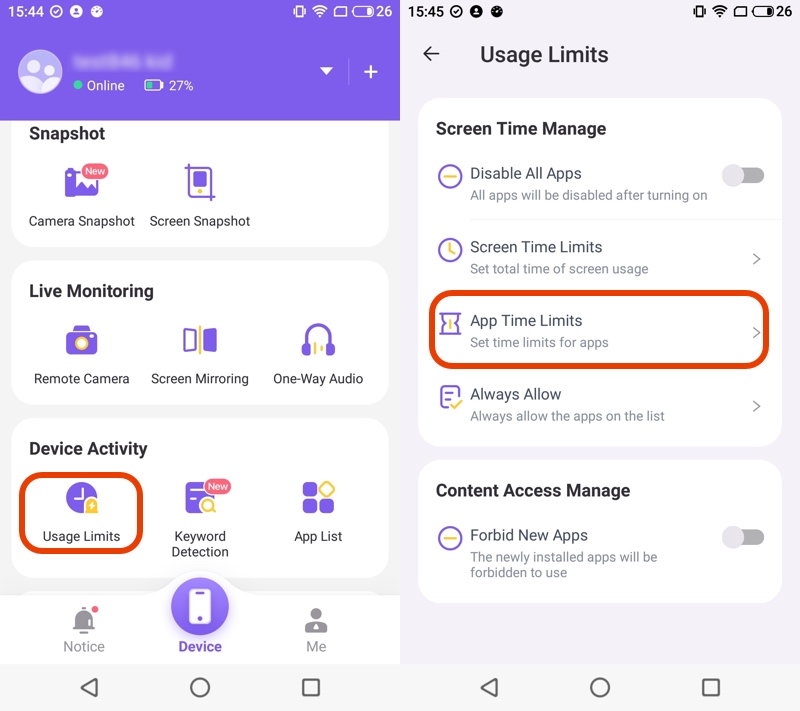


8. Use The “Always Allow” section to whitelist some essential apps.
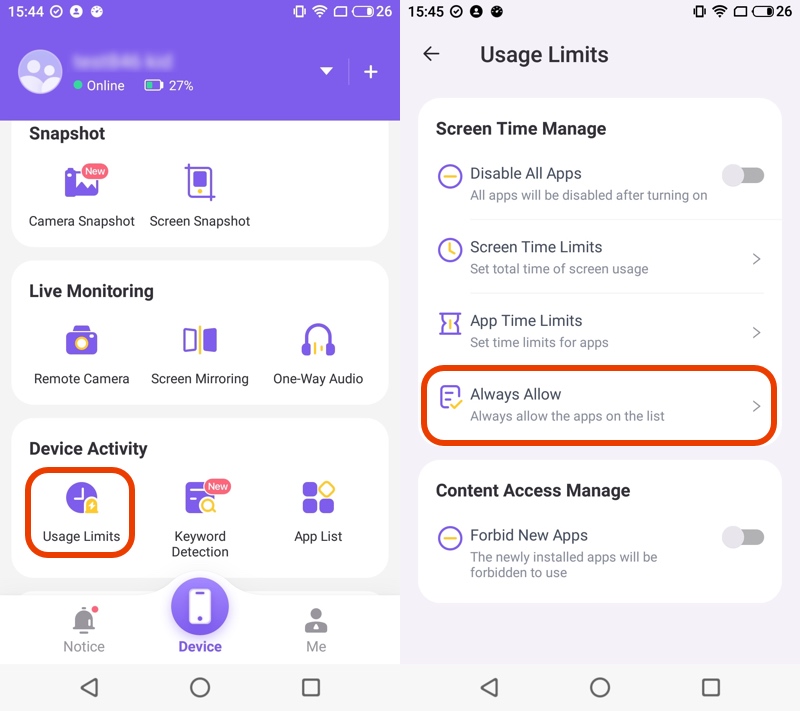


Conclusion
If uncontrolled, in app purchases would become a major gateway to financial indiscipline and possibly armageddon for parents seeking to keep their children safe. This guide offers detailed instructions for disabling or enabling in-app purchases on your iOS and Android devices. By following this instruction and using parental control apps like FlashGet Kids, you can properly keep track of spending within limits. This ensures that usage is balanced and safe.
You need to have control over in-app purchases to prevent your children from making accidental buys. It is also important to keep a tight leash on how much you are spending yourself. The detailed steps for each platform – iOS or Android, will give you the ability to balance your consumption according to your requirements. Parental control applications also offer an additional layer of security, and keep you in the loop which brings some peace to your mind.
FAQ
Can family sharing see my in-app purchases?
Yes, Family Sharing allows family members to see and share in-app purchases. However, some purchases may not be eligible for sharing. Always check the app’s sharing policies for specifics.
Can my parents see my in-app purchases?
If you are part of a Family Sharing group and the organizer has enabled purchase sharing, your parents can see your in-app purchases. This transparency helps in monitoring spending and managing budgets effectively

